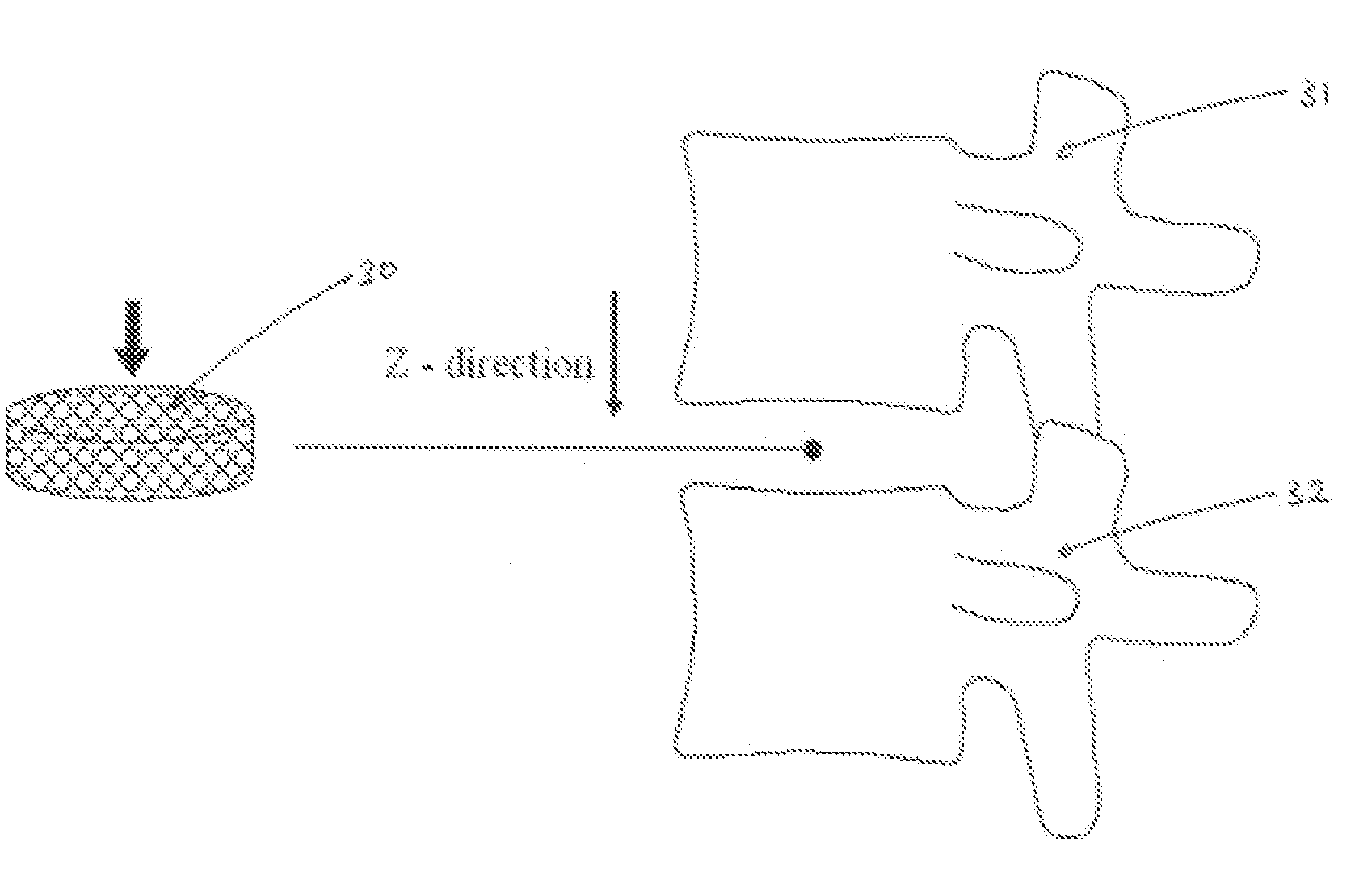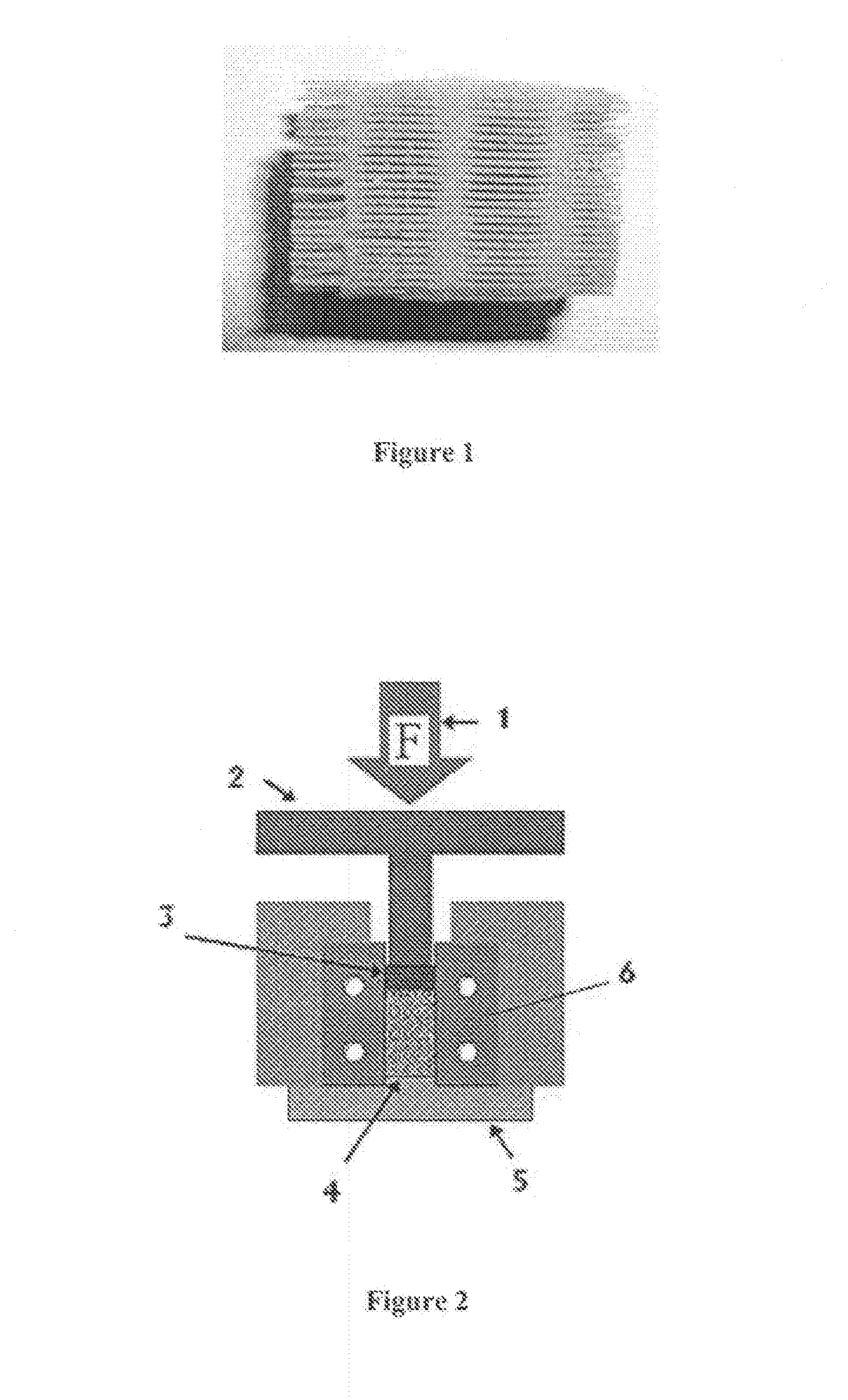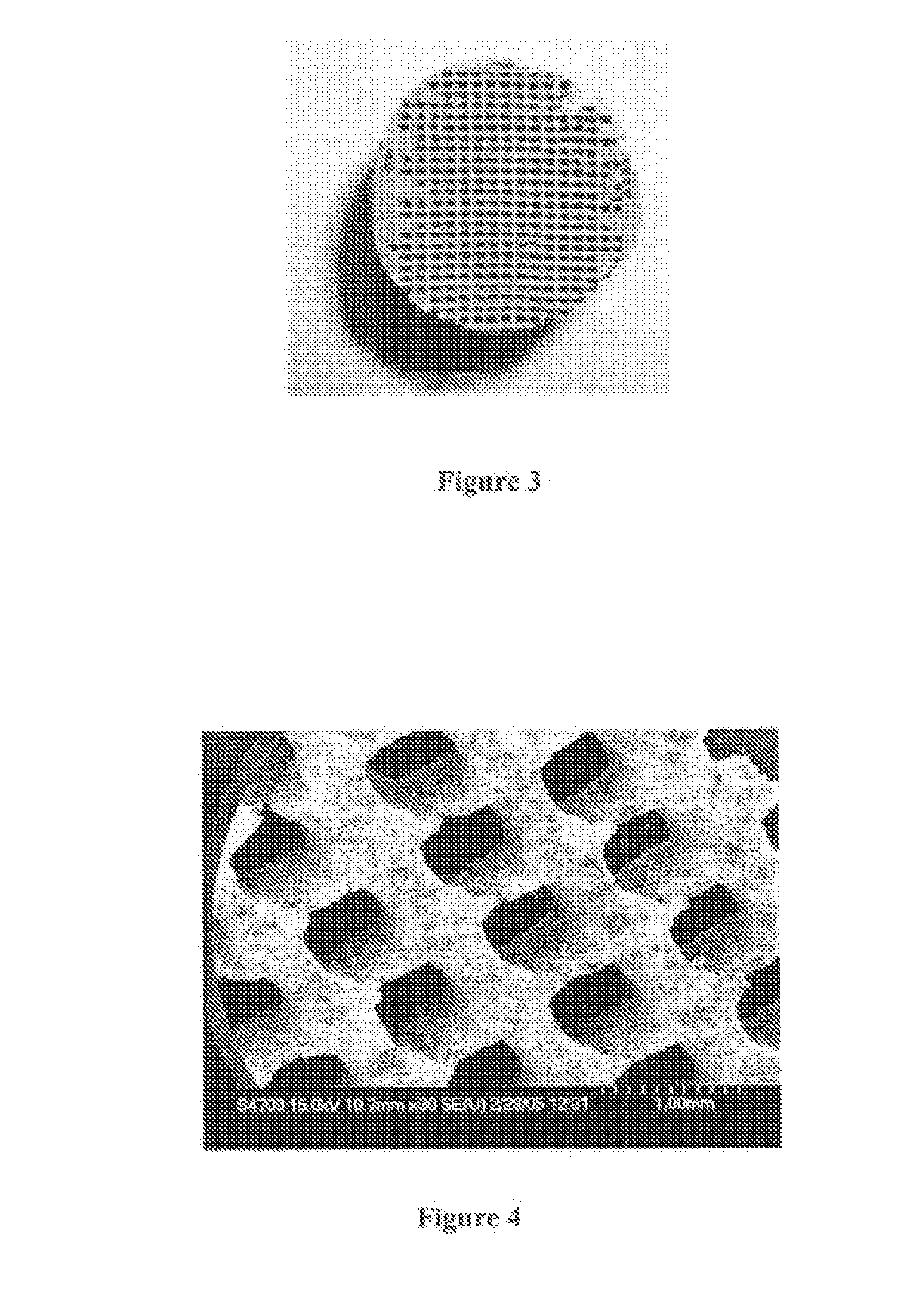Porous Substrates for Implantation
a porous substrate and implantation technology, applied in the field of porous substrates and porous matrices, can solve the problems of early material failure, implant loosening, bone degeneration, etc., and achieve the effect of enhancing biocompatibility and osseointegration
- Summary
- Abstract
- Description
- Claims
- Application Information
AI Technical Summary
Benefits of technology
Problems solved by technology
Method used
Image
Examples
example 1
[0181]Porous SS (Stainless Steel) Scaffolds Created Using Thermojet® Support Wax as a Space Holder Material.
[0182]Objective:
[0183]The objective of this experiment was to determine whether certain wax-based materials such as the Thermojet® wax could be used as a space holder material in the production of a porous metal scaffold.
[0184]Materials and Methods:
[0185]Samples of Thermojet® wax support material were acquired from printers of 3D-Systems Inc. (Herts, UK, and Valencia, Calif., US). A cylindrical shape was cut from the support material (see FIG. 1) and placed in a custom-made split (compaction) die 6. 316L stainless steel powder (−325 mesh) was dry poured into the die until the porous wax support material was completely immersed. Using a Dennison® hydraulic press 1, the samples were compacted to 300 MPa (see FIG. 2 for a schematic representation of the arrangement). After the “green” compact (green is used to refer to a compacted but not yet sintered material) was removed from t...
example 2
[0187]Creation of Porous SS Scaffold Using Thermojet® Wax Models Made to a Specific Desired Porosity.
[0188]Objective:
[0189]The objective of this experiment was to create a porous SS scaffold that would have predetermined pore characteristics. This can be achieved by first designing a porous scaffold in a piece of software (in this case AutoCAD®) so that the scaffold (including its pores) is completely pre-modelled as to size, shape and location.
[0190]The scaffold model can then be transferred for 3D-printing (3DP), for example to a Thermojet® printer, of the scaffold, utilising in this case a wax material. A similar procedure as described in Example 1 can then be used to create the SS scaffold with the inverse morphology of the porous wax model.
[0191]For the reasons discussed above the models constructed for the present Example utilised struts which zig zag at (alternate) angles of 7° from the perpendicular as shown in FIG. 6. Indeed FIG. 6 shows several of the parameters utilised i...
example 3
Introduction of Heating Element to Compaction Process
[0203]Objective:
[0204]The objective of this experiment was to eliminate the presence of cracks in the compacted wax / SS powder pellet following compaction.
[0205]Materials and Methods:
[0206]The wax was prepared according to the method described in Example 2, but alterations were made to the compaction rig (c.f. FIG. 13), which included a band heater 14 that was placed around the die housing 8 and a thermocouple 15 attached to the housing to monitor its temperature. The rig was positioned in a Dennison® hydraulic press ram and compressed to a pressure of 300 MPa.
[0207]At this stage the hydraulic press 1 was changed from load control to position control to prevent the movement of the upper punch 2. Stopper bolts 7 between the upper punch 2 and the die housing 8 ensured the position of the punch was kept fixed. The band heater 14 was then turned on and a thermocouple 15 used to monitor the rising temperature of the compaction rig. The ...
PUM
| Property | Measurement | Unit |
|---|---|---|
| Melting point | aaaaa | aaaaa |
| Melting point | aaaaa | aaaaa |
| Mechanical strength | aaaaa | aaaaa |
Abstract
Description
Claims
Application Information
 Login to View More
Login to View More - R&D
- Intellectual Property
- Life Sciences
- Materials
- Tech Scout
- Unparalleled Data Quality
- Higher Quality Content
- 60% Fewer Hallucinations
Browse by: Latest US Patents, China's latest patents, Technical Efficacy Thesaurus, Application Domain, Technology Topic, Popular Technical Reports.
© 2025 PatSnap. All rights reserved.Legal|Privacy policy|Modern Slavery Act Transparency Statement|Sitemap|About US| Contact US: help@patsnap.com



